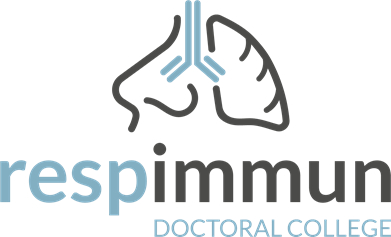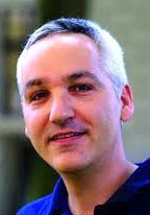
respimmun.at
• Böhm
• Heinemann
• Höfler
• Kargl
• Kwapiszewska
• Leithner
Marsche ⏩
• Marsh
•Moissl-Eichinger
• Olschewski A
• Strobl
• Heinemann
• Höfler
• Kargl
• Kwapiszewska
• Leithner
Marsche ⏩
• Marsh
•
• Olschewski A
• Strobl


The RESPImmun Faculty

|
Gunther MARSCHE, PhDLysophosphatidylcholines and eosinophil function |
|
Division of Pharmacology, Otto Loewi Research Centre, Medical University of Graz,
Neue Stiftingtalstraße 6, A-8010 Graz;
| |
| websites: [RESPImmun] | |
| • Profile ⏬ • Curriculum vitae • PhD students • Grants • Publications | |
Gunther Marsche is a biochemist and pharmacologist whose aim is to identify and characterize novel mediators of inflammation, with a focus on lipid mediators derived from hydrolysis of phospholipids. He is currently exploring how lysophospholipids affect eosinophil effector responses and endothelial function; thus, they may serve as novel therapeutic targets for both vascular diseases as well as other inflammatory diseases. Within RESPImmun he collaborates with Andrea Olschewski (inflammatory mediators), Ákos Heinemann, Eva Böhm, Leigh Marsh (animal models), Grażyna Kwapiszewska (transcriptomic analysis), Horst Olschewski (patient samples) and Gerald Höfler (pulmonary pathology).
Project
Project 4: Lysophosphatidylcholines and eosinophil functionCo-PI: Katharina Jandl
Background
With a growing interest in the involvement of extracellular lysophosphatidylcholines (LPCs) in both normal physiology and pathology, it has become evident that LPCs may have therapeutic potential. Recent data from our lab suggest that LPCs can regulate basic cellular activities by modulating several molecular targets,Hypothesis and objectives
Both serum levels of LPCs and circulating eosinophil numbers are associated with increased severity of asthma, yet so far, the functional role of LPC on eosinophils has remained poorly investigated. Here, we hypothesize that LPCs have an immunomodulatory function on eosinophils in allergic inflammation, thereby presenting a promising therapeutic target. In this project, we aim to investigate the functional role of the major LPC species on effector responses of human primary blood eosinophils and on human eosinophil–endothelial cell interaction. This project will also test the direct therapeutic ability of LPC in in vivo models of eosinophil recruitment and ovalbumin-induced allergic lung inflammation.Methodology
Year 1: The student will learn how to isolate eosinophils from peripheral blood. Functional responses of eosinophils and endothelial cells will be investigated in assays for shape change, integrin upregulation, chemotaxis, Ca2+ signaling and endothelial barrier function (electrical impedance measurements).Input from collaborations within the RESPImmun programme
- Ákos Heinemann will train the student in isolating eosinophils from the blood,
- Grażyna Kwapiszewska will supervise the student when assessing LPC-induced downstream signaling in eosinophils and endothelial cells using transcriptomic analysis,
- Eva Böhm and Julia Kargl will train the student in chemotaxis assays of eosinophils in vivo,
- Horst Olschewski will provide serum from patients with eosinophilic asthma,
- Gerald Höfler will support the student with his expertise on lung pathology,
- Andrea Olschewski will support with in vivo cell calcium imaging.